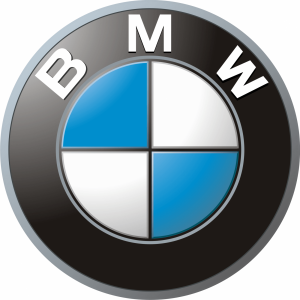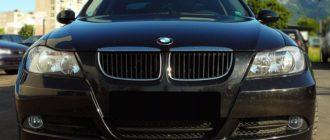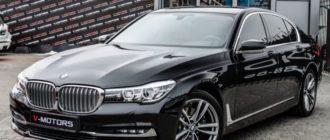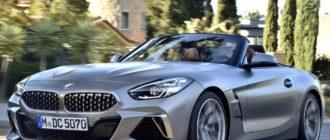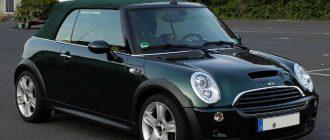In the distant year of 1993, at the Frankfurt Motor Show, the world was introduced to the third generation of the famous Seven — BMW 7 e38. The model underwent modernization in 2001, and this version was so good that it could compete with the Mercedes-Benz W140. Currently, the starting price of this car is affordable, but not everyone can afford its maintenance.
Exterior of BMW 7 e38
The model looks quite respectable, although it is worth noting that it lacks a certain relevance today. The front of the car is adorned with slim halogen headlights, and fog lights are also present. The elongated hood blends seamlessly with the radiator grille.
The car's bumper is equipped with plastic inserts and chrome details. On the side, slightly enlarged wheel arches and small embossed lines can be noticed on the upper and lower parts of the car, with a chrome decorative molding running through the center. This material is also used as window trim. These side decorative elements end here.
At the rear, the BMW 7 e38 is also equipped with oval-shaped halogen headlights, and the bumper is adorned with plastic molding. The trunk is quite spacious — 500 liters, which is quite good.

For better visualization, let's write down all the standard dimensions of the car:
- Length — 4983 millimeters
- Width — 1862 millimeters
- Height — 2931 millimeters
- Wheelbase — 2931 millimeters
- Ground clearance — 120 millimeters
Interior
The interior of the car is quite stylish, with leather seats alone being worth mentioning. Perhaps it lacks some modernity, but this does not detract from the impression of the interior design. The driver's seat and the front passenger's seat are equipped with electric adjustment.
There is plenty of space, and the upholstery is made of quality leather and good wood, giving the car a rather aristocratic look. The presence of separate climate control is also significant.
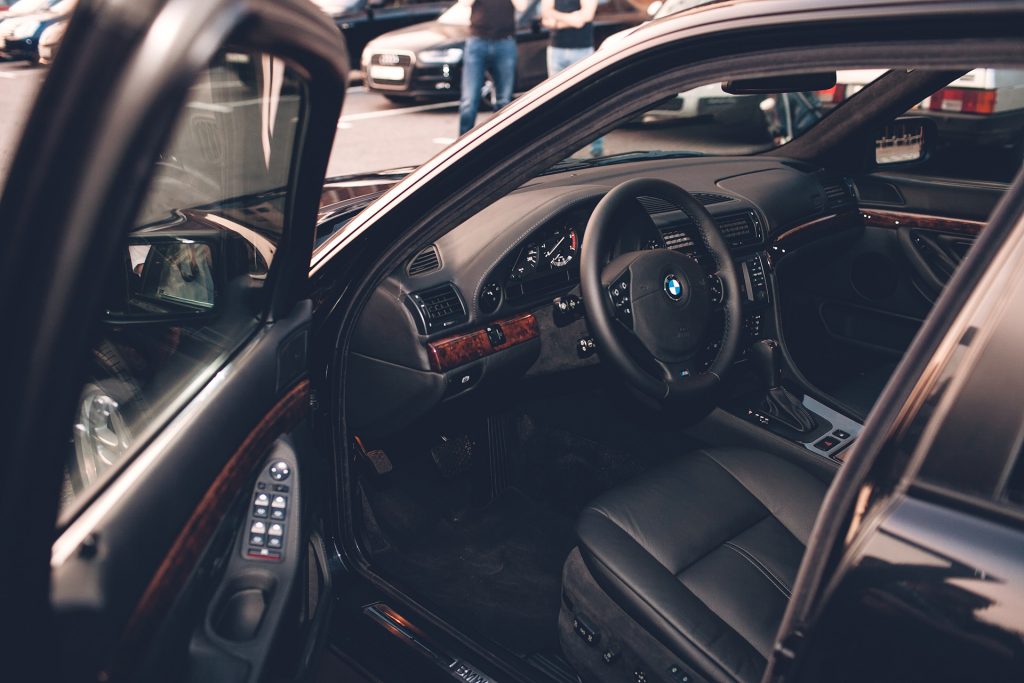
The four-spoke steering wheel in the BMW 7 e38 is also made of leather. It features stereo system and Cruise control buttons.
Equipment of BMW 7 e38
The dashboard features:
- standard sensors,
- a small onboard computer,
- a speedometer,
- a tachometer,
- a fuel level sensor, and an oil temperature gauge.
On top, the central console is equipped with a ventilation deflector, and below it is a cassette player, which may sound a bit funny today, even though it is equipped with a small display.
The central tunnel trim matches the interior of the entire car and is made of leather and wood. The armrest has a large compartment for small items and a phone, which can be used after inserting a SIM card.
The door trim of the car is also made of high-quality leather and adorned with wooden elements. Based on the description, one can understand that the interior trim is still quite good to this day.
Technical Specifications of BMW 7 Series e38
For better clarity, we have arranged all technical specifications into a table:
| Type | Displacement | Power (hp) | Torque (N*m) | Acceleration (sec.) | Max speed (km/h) | Number of cylinders |
| Diesel | 2.5 | 143 | 280 | 11.3 | 206 | 6 |
| Diesel | 2.9 | 184 | 390 | 9.2 | 220 | 6 |
| Diesel | 2.9 | 193 | 280 | 8.9 | 220 | 6 |
| Diesel | 3.9 | 143 | 560 | 8.4 | 242 | V8 |
| Gasoline | 2.8 | 193 | 280 | 8.7 | 228 | 6 |
| Gasoline | 3.5 | 235 | 320 | 7.6 | 244 | V8 |
| Gasoline | 3.5 | 238 | 345 | 7.6 | 244 | V8 |
| Gasoline | 4.4 | 286 | 440 | 6.6 | 250 | V8 |
| Gasoline | 5.4 | 320 | 490 | 6.6 | 250 | V12 |
The car's lineup includes nine engines. Let's start by looking at the configurations that include a diesel engine. At number one in the table is a six-cylinder 2.5-liter engine, with a power of 143 horsepower and a torque of 280 Newton-meters. The fuel consumption in urban conditions is just over eleven liters.
At number two is an engine with a displacement of 2.9 liters, a power of 184 horsepower, and a torque of 360 Newton-meters. The fuel consumption in the city will be one liter higher.
The third number is a replica of the previous one, except for the power, which has increased by nine horsepower and torque, which is 280 Newton-meters. Fuel consumption is similar.
Concluding the list of diesel engines is a V8 engine, with a displacement of 3.9 liters, a power of 245 horsepower, and a torque of 560 Newton-meters. Fuel consumption in urban conditions is fifteen liters.
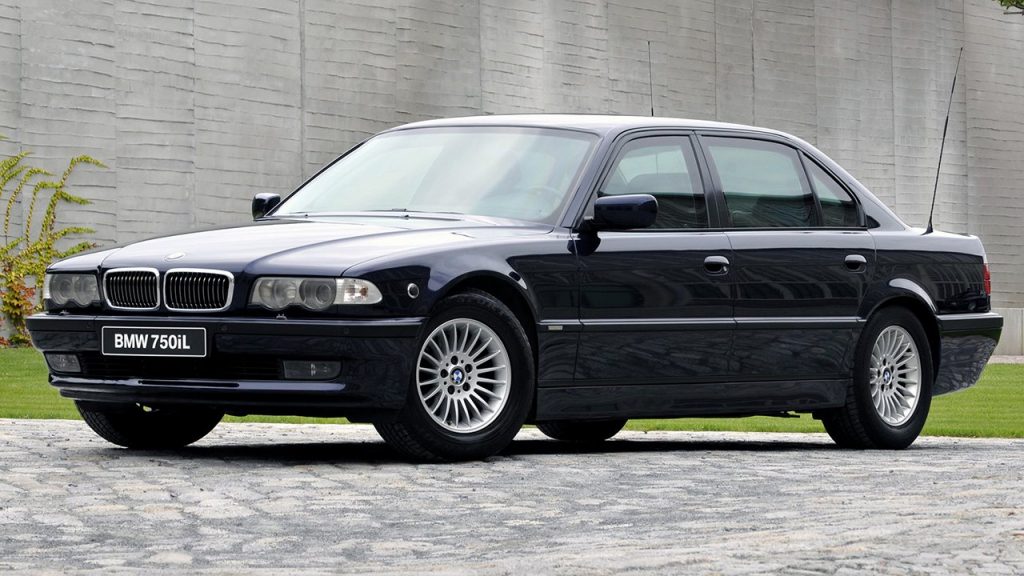
You can conduct a comparative analysis using the table above, and we move on to gasoline engines.
At number one is an engine with a displacement of 2.8 liters, a power of 193 horsepower, and a torque of 280 Newton-meters. The fuel consumption of A-95 gasoline in urban conditions is fourteen liters.
The second V8 engine has a displacement of 2.8 liters, a power of 193 horsepower, and a torque of 320 Newton-meters. The fuel consumption is around eighteen liters.
The third is similar to the second, with the only difference being the power, which is 238 horsepower and a torque of 345 Newton-meters.

Next in line is the same V8 engine, but with an engine displacement of 4.4 liters, a power of 286 horsepower, and a torque of 440 Newton-meters. It consumes fuel around eighteen liters.
And last but not least, the legend of this lineup — the V12, with an impressive 326 horsepower and a torque of 490 Newton-meters. Fuel consumption will be around twenty liters in the city.
Suspension and Transmission of BMW 7 Series e38
This modification is equipped with an entirely independent suspension, consisting of two front control arms and four rear ones. The suspension is quite soft, but reliability, on our roads, is lacking. This is due to its aluminum upper part. After a mileage of 100,000 kilometers, the ball joint will need to be replaced, and the silent blocks will need to be replaced more frequently, every 50,000 kilometers.
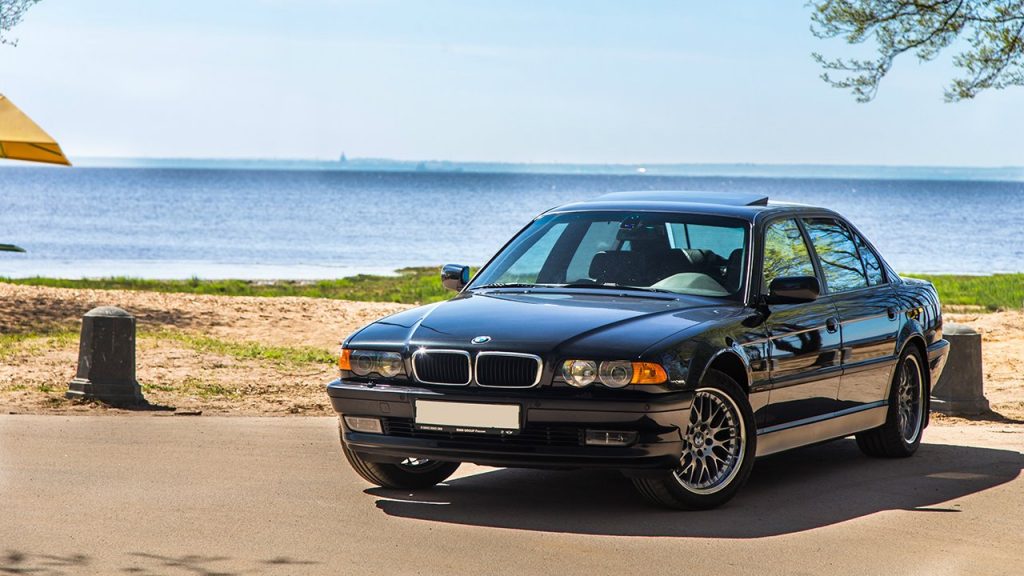
Not all configurations are equipped with pneumatic suspension, so its presence needs to be clarified. As well as the presence of a manual or automatic transmission. The brake pads are disc brakes equipped with ventilation.
Price of BMW 7 e38
The BMW 7 Series car, in particular, the e38 model can only be found on the secondary market. The average price for such a model is 300,000 rubles. Agree, this is quite a reasonable amount for a luxury car.
If you have your eye on this car, we recommend buying it above the average price, as a car priced at 500,000 rubles and above is significantly better in condition.
In this case, less money will be spent on its modernization. And this is definitely not the kind of car you should buy on your last dime.
